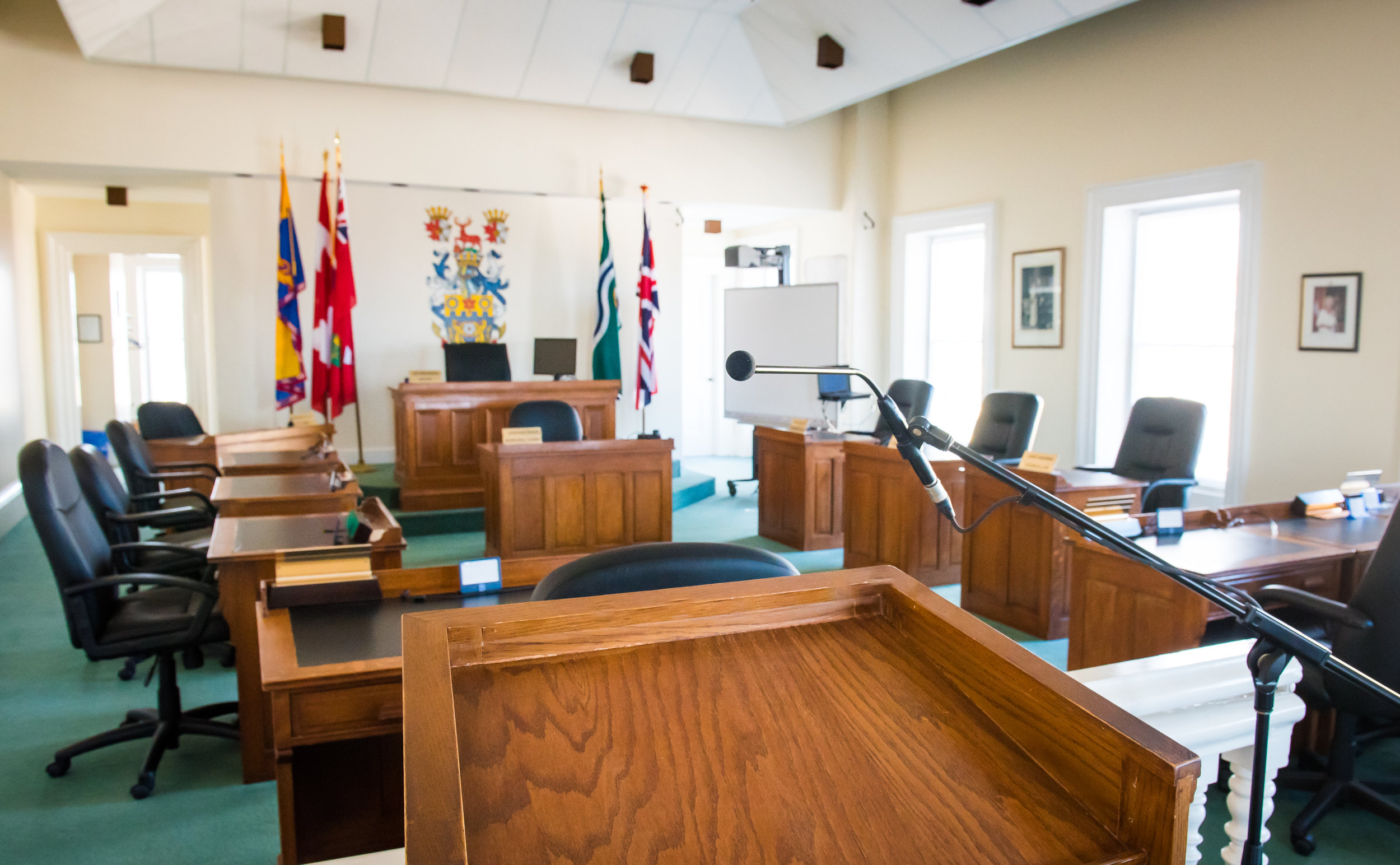Cobourg's Legion Village contemplates significant expansion
By Cecilia Nasmith
A waiting list of some 800 seniors to get into Legion Village is the motivation behind plans to virtually double its capacity with five-storey additions to the east and west of the existing four-storey structure.
The project was brought before Cobourg's Committee of Adjustments Tuesday, with more than 90 minutes of presentations and discussions both pro and con.
Existing zoning permits a maximum of 172 units for the elderly and disabled and 32 hostel dwelling units with no more than two beds each, as well as a maximum height of four storeys and no reduction to the landscaped open space (committee chair Robert Marr clarified that a “hostel” unit is one with no kitchen, where the occupant takes his or her meals in the cafeteria).
Proposed are an increase to a maximum of 400 dwelling units regardless of type, a decrease in the landscaped open space to 42% (from 65%), and an increase of the maximum net density of 100 units per net hectare to 150.
Committee member Peter Delanty – a life-long Cobourg resident and former mayor – provided some historical perspective, noting that even though the zoning allows the fifth storey, it has been accepted policy to limit the height of buildings beside the waterfront. There was no wish to mimic Toronto's practice of building 60-storey condominiums by the waterfront, he said.
The committee also heard from Legion Village Executive Director Mike Eden, who said the facility has a 40-year history of providing affordable housing and assisted living for elderly individuals – however, the waiting list over the past decade has grown to 800, which works out to a 10-year wait.
“It is not our intention to have anyone move into Legion Village who is under the age of 65,” Eden stated.
“It has been our mission statement since 1979 that we are a home for the elderly who have given their labours to the community, I have had several comments that we are providing a safe haven for drug addicts and homeless – that could not be further from the truth.”
Eden added that the funding they receive is predicated on this.
“We are a nonprofit facility, not a greedy corporation looking to expand to make profits.”
It was Eden who brought up the parking requirements they are subject to, of half a parking space per unit.
He also acknowledged concerns over plans for some of this additional parking to abut the Cobourg Ecology Garden and affirmed his intention to preserve this botanical treasure to the south.
“We have had a great relationship with them for the last 28 years, which we want to continue in the future for more than 28 years.”
Cindy Beman, manager of a non-profit housing corporation, applauded the expansion.
“Every week I get two, three, four calls from seniors because they are being evicted. They've got no place to go. They can't afford market rent as we know it today. The need is horrific,” Beman said.
“We have to do something to address affordable housing for everyone, but especially seniors.”
Rodger Cooper expressed scorn at the adequacy of the parking formula. At nearby Victoria Gardens, he pointed out, there are more than 100 units and a parking lot with only seven or eight visitor spots. The predictable result, he said, is that the street is always used.
Expressing another opinion, Beman said her 40-unit building has 17 parking spots, and that's plenty.
The impact of a fifth storey on sightlines was brought up by several nearby residents, including John Morris who said that a fifth storey would take away 40% of his view of the lake from his own fifth-floor condominium a short distance up the hill.
For this, Marr said, there is no remedy.
“The truth is, you don't own the view,” Marr stated.
“It's as simple as that, I'm sorry to say. People have a right to put a fifth storey and without consideration of the fact that you are going to lose the view. That's the standard for any property in this country.”
Committee member David Dexter voiced concerns for the residents of Durham Street to the west of Legion Village, and plans to offer access to the expanded parking lot from that quiet dead-end street. Another concern for the residents of Durham Street are plans for 117 Durham – town-owned land once used as a recreational field for CDCI West before it closed, and now the site of plans for a combination park and housing development (a mix of affordable and market units).
Durham Street resident Robert Wallace weighed in on how he thought he was moving onto a nice quiet cul-de-sac in an historic area six years ago, and how he fears a dramatic increase in traffic due to both developments.
And the drainage there is not ideal, he added.
“When it storms in the summer and it's heavy, the whole road floods,” Wallace stated.
Delanty recalled that that whole area was designated a flood plain after Hurricane Hazel in 1954.
A Syndenham Street resident representing 41 concerned citizens echoed that concern, commenting on the negative impact that will result from the loss of trees and permeable surfaces.
In the end, the committee voted to approve the application, but with a number of conditions – all of which must be satisfied at no cost to the municipality. These include a Shadow Impact Study, completion of a comprehensive downstream sanitary capacity study (with 100% of costs to facilitate any work to come out of the study to be the owner's responsibility), a survey that includes geodetic elevations to prove the development is outside the floodplain (to the satisfaction of the GRCA), the submission of a functional stormwater-management servicing report, a development agreement approved by the Manager of Development Review, and any other technical reports and drawings identified during the process.
Director of Planning Anne Taylor Scott noted that the approval depends on every condition being satisfied completely.

